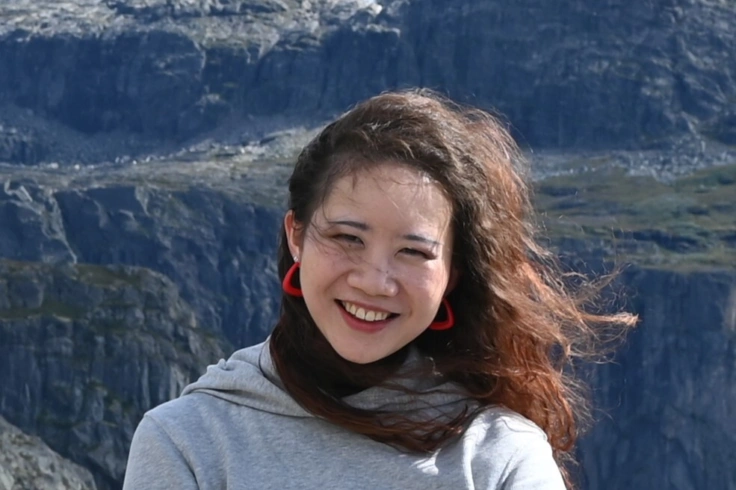Aktuelt

28.11.25
Ny doktorgrad - Grønlandsisens fremtid
Charlotte Rahlves disputerer 3.12.2025 for ph.d.-graden ved Universitetet i Bergen med avhandlingen "Improving Greenland ice sheet projections across timescales".
Tags: PhD Candidate, Disputas, Grønland

25.11.25
Alt vannet vi ikke ser
Bare en brøkdel av havet ligger i overflaten. Hvordan finner man ut hva som foregår i vann som ligger under vann?

13.11.25
Ny doktorgrad: Brobygging over brukbarhetskløften i klimatjenester
I doktorgradsavhandlingen sin undersøker Mathias Venning den vedvarende ‘brukbarhetskløften’ innen klimatjenester – gapet mellom utviklingen av slike tjenester og deres faktiske bruk i praksis

13.11.25
Nytt rekordår for CO₂-utslepp
Globale CO₂-utslepp frå fossile brensel er venta å vere 1,1 % høgare i 2025. Havet sitt opptak av karbondioksid er blitt vurdert på nytt basert på sterkare bevis og ny forståing.

03.11.25
Forbudte gasser avslører dypvannets alder
Å slippe ut gasser som bryter ned ozonlaget, har vært ulovlig i snart førti år. Likevel finnes rester av slike stoffer i havet – en brysom arv havforskere kan utnytte til å følge vannets ferd.
Tags: AMOC, KFK, Golfstrømmen, Dypvannsdannelse

29.10.25
Kartlegging av havets komfortsoner
Hva er trygge livsrammer for marine økosystem? I en ny forskningsartikkel undersøker Timothée Bourgeois og kollegaer hvor grensene går for å bevare biodiversitet, matsikkerhet og menneskelige samfunn.
Tags: Karbon

27.10.25
Framtidens klima i Norge: Flere oversvømmelser, mer tørke og mindre snø
Klimaet i Norge har endret seg mye allerede, og effektene blir sterkere i årene som kommer. Det viser en ny rapport fra Norsk klimaservicesenter.

21.10.25
Ny doktorgrad: Modellering av istidene
I doktorgradsarbeidet utvikler Daniel Gunning en klimamodell som simulerer Jordens klima over millioner av år. Gunnings arbeid viser hvilken avgjørende rolle vinterhavisen spilte for å skape den sterke 41 000-årige syklisiteten i tidlig Pleistocen.

21.10.25
Hvordan kan forskere finne ut hva temperaturen var tusenvis av år tilbake?
Sher-Rine Kong har studert en innsjø på Svalbard. Hennes resultat tyder på at temperaturen under tidlig holocen - altså for rundt 11,700 år siden - var opp mot 3.5 3.5 °C varmere enn i dag. Hvordan finner forskerne ut av temperaturen så langt tilbake i tid?

16.10.25
Ny doktorgrad: Brobygging over brukbarhetskløften i klimatjenester
I doktorgradsavhandlingen sin undersøker Mathias Venning den vedvarende ‘brukbarhetskløften’ innen klimatjenester – gapet mellom utviklingen av slike tjenester og deres faktiske bruk i praksis.

13.10.25
To systemer, én kritisk utfordring
Den nye Global Tipping Point-rapporten er ute og advarer om potensielle risikoer for Atlantic-sirkulasjonen – det er imidlertid stor usikkerhet om når, eller om, vippepunktene vil bli krysset.

03.10.25
Ny doktorgrad: Under istidsklima kontrolleres sjøisutbredelsen i de Nordiske havene
For å undersøke havisens rolle nærmere, har Wanyee Wong analysert biomarkører fra en sedimentkjerne hentet fra det østlige Framstredet - en viktig port mellom nordiske havene og Polhavet. Resultatene viser at endringer i havis i dette området ikke alltid fulgte samme mønster som i det bredere nordiske havområdet og Nord-Atlanteren.

30.09.25
Klimamodeller tilgjengelige for alle
Hvordan kunstig intelligens gjør komplekse data forståelige

18.09.25
Rebekka vant Forsker Grand Prix Bergen 2025
Gratulerer så mye til Rebekka Frøystad, som stakk av med seieren i Forsker Grand Prix. Også kollega Nina Hecej stilte i den bergenske finalen.

17.09.25
Fra Naturpanelet til Klimapanelet: – Kjenner på ærefrykt
Hun har bidratt i to av Naturpanelets rapporter. Nå skal Vigdis Vandvik være koordinerende hovedforfatter i FNs klimarapport, den sjuende i rekken.

04.09.25
Blåhvitt i nord
På eller i Nordpolen? Preposisjoner er vanskelige, særlig når is blir til vann. Denne uken nådde en forskningsekspedisjon Nordpolen med isbryter – lekende lett.
Tags: Polarklima, Klimafare

26.08.25
Regjeringen lanserer Polhavet 2050
Regjeringen innvilger én milliard kroner over ti år til forskningsprogrammet Polhavet 2050, der UiB er en viktig aktør.

20.08.25
– Hvorfor regner det ikke mer?
Klimaendringer forsterker det verste regnværet mer enn ordinært sipperegn. Ny forskning viser at regn i forbindelse med fronter påvirkes mest, og illustrerer hvorfor annet ekstremregn ikke blir like ille.
Tags: Klimafare, ekstremnedbør, Vær

30.07.25
Klima i endring - flom og skred i Norge gjennom 10 000 år
I et varmere og våtere klima vil hyppigheten av regnflommer trolig øke, mens de årlige vårflommene på Østlandet kan avta dersom snømengden i fjellet reduseres.

11.07.25
Tap av sjøis stabiliserer Golfstrømmen
Faren for en oppbremsing av havstrømmer i Nord-Atlanteren er mindre enn antatt. Ny forskning tyder på at dannelse av dypvann i isfrie deler av Polhavet vil holde hjulet i gang.
Tags: Polarklima, Golfstrømmen, sjøis, havstrømmer, Arktis, AMOC